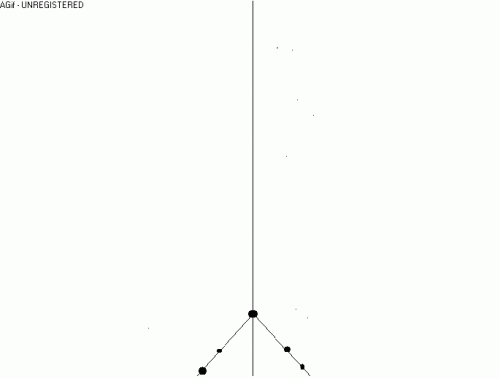-
Posts
6258 -
Joined
-
Last visited
-
Days Won
2
Content Type
Profiles
Forums
Events
Everything posted by michel123456
-
Exactly. To me, for the Cosmoligical principle to apply, the further you look back in time, the Universe should remain roughly the same. Does this comes from a measurement? Or is this a supposition?
-
If I understand clearly from the set up So everything in this case is in a state of acceleration. There is no object exactly "at rest", only objects that have the same acceleration, and thus feel like "at rest" i.e. in constant motion. -------------- IOW the mass at the apex is constantly under acceleration. Even when it looks "at rest".
-
Interesting. Never heard of Newton's dome before. is there gravity in this thought experiment?
-
........[resuming from speechless mode] ........ Are 326 million years negligible to the 13 billion years? it is about one in 39.
-
Laws of physics apply to the shaking hands. But one position and velocity does not tell you anything about where will be te hands the next instant. It is not like a double pendulum. http://en.wikipedia.org/wiki/Chaos_theory#/media/File:Double-compound-pendulum.gif
-
Oh. In this case, we are not talking about a sphere of 100 Mpc, but a circle of 100Mpc. A circle including all objects that have exactly the same cosmological age with us. Because with a sphere, all objects are cosmologically closer to the BB than we are. Is that correct?
-
I still am worried with the cosmological principle as commonly presented. Let me try to explain. Distance is related to time. When you reach cosmological scales, the sphere of 100 Mpc mega parsecs is a sphere that spreads in space AND in time. That is to say that observers that are physically related inside or on the surface of this sphere are not in the same time frame. But that makes no importance at all for the cosmological principle to work. IOW the cosmological principal teaches us that the universe should look roughly "the same" independently of position and direction AND time. The "and time" part added by me. And thus, if I understand correctly, the cosmological principle is not in agreement with the BB Theory, because following the BB Theory, the Universe should not look the same through time, but should change (because it expands). Or the other way round should be to say that NO, the Cosmological principle states that the Universe looks roughly "the same" but in a very specific time frame, and then how do you make a "sphere" of 100 Mpc? It is not a sphere any more.
-
Do you have an example of this? The shaking hands of a human with parkinson disease Again, example? Hum. That is mythologic χάος. It is a "soup" of unrelated things. Not sure is anything like that really exists, but anyway there was a name for this concept. Maybe something like the blinking of stars in the night, where each blinking is totally unrelated to the other one, apparently.
-
You take that definition from the chaos theory, that's fine. But then how do you call a system where there is absolutely no relation between one position and the next one, although being related by cause & effect. And finally, how do you call a system that really relates to the ancient Greek ethymology of chaos, a system where there is no (apparent) law?
-
Make war illegal. Oblige nations to behave like individuals. No spying, no brutality, no robbery.
-
If you let the paper fall and stop its fall after 1/100 sec. you will observe that its motion is deterministic. As much you increase the duration of the fall it will become harder and harder to predict its accurate motion. But it is still deterministic. You can even mimic with your hands the shape of the path. it is not chaotic. Shake your hands as if you had parkinson: that is chaotic. And I am not even sure it is chaotic enough.
-
because the paper is not "transparent" to air. When the paper displaces, the air must go round the paper. without air, the motion is not erratic. I suppose that when air is present, the motion of the paper that you say is erratical, is in fact deterministic, IOW not chaotic. If you can make a device that lets fall the paper in the exactly same way in a chamber with exactly controlled null air flow and null temperature gradient, etc. the paper should fall in exactly the same "erratical" way each time. in practice you cannot do that, I suppose. what you can do is describe a theoretical volume in which the paper will fall, and never escape from.
-
The world area is 510,072,000 km2 10% of the Earth area is 51 million km2. That is roughly 1/3 of all land area. (148,940,000 km2) more than 5 times the area of the U.S.A. (9,526,468 km2) http://en.wikipedia.org/wiki/List_of_countries_and_dependencies_by_area from http://www.footprintnetwork.org/images/uploads/Ecological_Footprint_Atlas_2010.pdfp13. 167 million hectares are 1.67 million km2 So 10% of the world area corresponds to about 30 times the world built-up land.
-
That is why the French created the Académie française. I don't know if there is an English counterpart.
-
Is that the whole Earth surface or half of it (the half that faces the sun)? ------------------- And I suppose a lot of this energy is re-emitted at night.
-
I suppose that the interpretation of the balloon analogy is that the entire Universe lies on its surface. In the interior of the balloon there "was" the Universe in the past, and outside of the balloon there "will be" the Universe in the future. IOW the only one Universe that "actually exists" is the surface of the balloon, there "is" nothing inside and there "is" nothing outside. In this sense, there "is" a universal Now and that "is" the surface of the balloon. I understand that the statement "all observers agree on the age of the universe" corresponds to that point of vue.
-
This statement answers a question of another thread, as if there IS indeed a universal Now across the universe. Or do I understand very badly the consequences of "all observers agree on the age of the universe"
-

Is there a common moment of now throughout the Universe?
michel123456 replied to 1x0's topic in Relativity
is completely crazy. We and the observable universe are the black dots. Click the image if nothing happens, it's a .gif. We are translating into time from bottom up. -

Is there a common moment of now throughout the Universe?
michel123456 replied to 1x0's topic in Relativity
We should begin a new thread about "are we 3D or 4D?" -

Is there a common moment of now throughout the Universe?
michel123456 replied to 1x0's topic in Relativity
In this diagram, The "common moment of NOW throughout the Universe" for observer A is represented by the slice t3. I claim that 1. what observer A observes at time t3 is not the slice 2. the slice is made up of events that are not directly related by cause & effect. For example, gravity does not act directly between the objects that lie upon the slice. -

Is there a common moment of now throughout the Universe?
michel123456 replied to 1x0's topic in Relativity
Yes, that is correct No, that is not what I stated. We are cross posting our comments. No I am not claiming that "everything is unphysical because nothing can go faster then light". I am claiming that the slice on the diagram is unphysical. -

Is there a common moment of now throughout the Universe?
michel123456 replied to 1x0's topic in Relativity
It is not a matter of human error. It is matter of physical impossibilty to access instantaneously the infos coming from the universe. The info we gather is delayed, and is only a tiny part of the whole thing. What we may call "Reality", or "what we observe now", is not an image of the slice, it is an image of the surface of our past light cone. -

Is there a common moment of now throughout the Universe?
michel123456 replied to 1x0's topic in Relativity
No no, I claim exactly the contrary. The slice is unphysical because exactly as you wrote: nothing can have an instaneous effect. Nothing can go faster than light.



